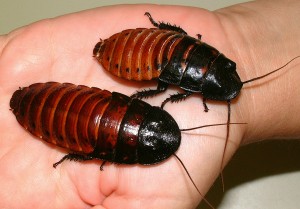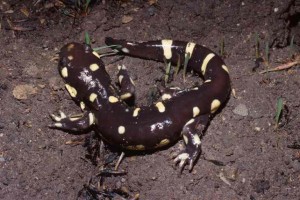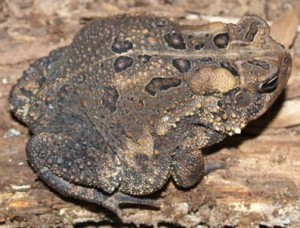Madagascar Hissing Cockroaches
The Madagascar hissing cockroach is brown, with orange markings on its abdomen. This giant roach does not have wings or wing pads at any stage in its life. The Madagascar hissing cockroach has small holes (spiracles) for breathing along its back. If the hissing cockroach forces air out quickly, it makes a hissing sound similar to snake. It makes a hissing sound when threatened or to establish dominance between males. The cockroach is nocturnal and generally active at night. When fully grown, the male and female cockroaches look different. The male grows two humps on the front of its body to use in ramming other males when establishing or defending its territory. The cockroach is considered one of the most primitive creatures on earth. Some are immune to high doses of radiation (that would kill humans), and some can survive up to a week after losing its head. Interestingly, a cockroach will die from dehydration. The Madagascar hissing cockroach is an herbivore and eats rotting plants, fallen fruit and vegetables, and decaying animals from the forest floors. It is a scavenger and plays an important role in the nutrient cycle. The cockroach is invaluable for recycling a large majority of the earth’s dead and decaying plant and animal matter. Without the cockroach, tropical forest would smother from and die from dead and decaying vegetation. The Madagascar Hissing Cockroach is native to the island of Madagascar, located off the coast of Africa. It is found living in large colonies among the underbrush on forests floors
Tiger Salamanders
The Eastern Tiger Salamander (Ambystoma tigrinum tigrinum) are characterized by a dark background with light yellow-gold markings extending down their sides. It is found in the eastern half of North America. In the north it is an early spring breeder, migrating to ponds after heavy rains. The Tiger Salamanders are large, robust salamanders reaching average total lengths up to 8.5 inches, though some individuals over 12 inches long have been found. Outside of the breeding season they are seldom seen, as they spend most of their time underground, often in mammal burrows.
Eastern American Toads
The American Toad is probably the amphibian most often seen by people in our area. It enters lawns and gardens, and it frequently crosses roads. American Toads are large, growing up to 4 1/2 inches long. Full-grown adults are usually chubby. These toads varies in color, but are usually brown, brick-red, or olive-colored. They have patterns of lighter colors on their bodies, as well as brown spots. All of them have warts, and some have a light stripe down their backs. Both male and female toads have a spotted belly, but the male has a darker throat. Adult American Toads are found just about anywhere there is moisture. They now have lungs to breathe out of water, but like all amphibians, they need to keep their skin moist. American Toads can be found in forests, meadows, and gardens. They are mostly active at night. These toads are predators and they eat a lot. Insects, spiders, earthworms, snails, and slugs make up most of their diet, but they will eat just about anything that fits in their mouths. American Toads will lash out with their sticky tongues to grab prey. If the prey is large, they will use their arms to stuff it into their mouths. American Toads hide under rocks, logs, and leaf litter during the day. When the weather gets cold, toads will burrow up to three feet under ground to hibernate. Predators of American Toads include snakes, owls, skunks and raccoons. American Toads have special glands, called paratoid glands, which produce a foul-smelling, toxic chemical. This will keep some predators from trying to eat it. Other defenses used by American Toads, include playing dead and puffing up their bodies to look bigger than they actually are. To get around the paratoid glands, raccoons will flip over an American Toad and eat from the underside. American Toads can live up to thirty years.


